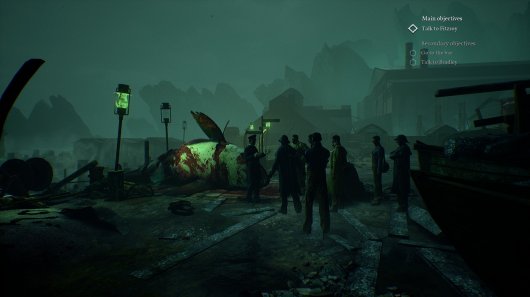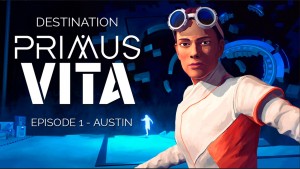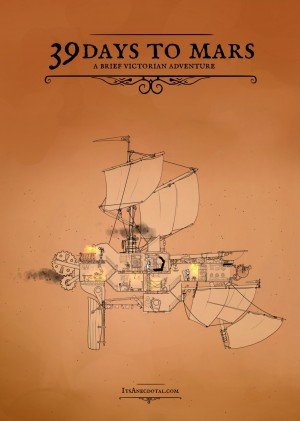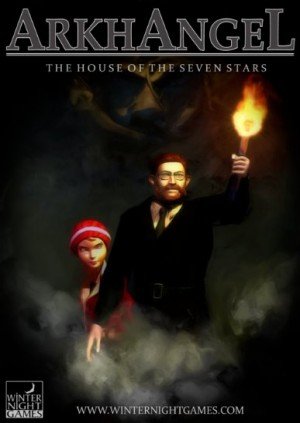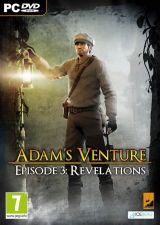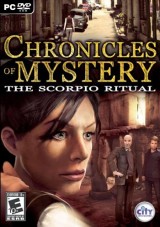Review for Call of Cthulhu
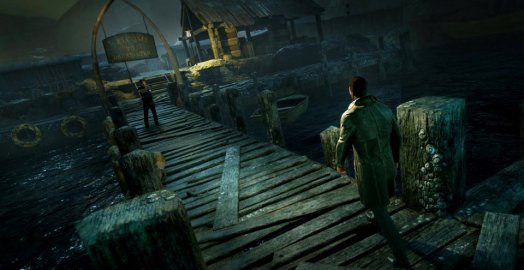
Sanity is a curtain concealing the machinations of the Great Old Ones. They call out from their place of slumber, invading your mind, tempting you to brush the curtain aside and glimpse the unknown in its writhing disquietude. Such is the existential horror of H.P. Lovecraft, whose stories were once considered unadaptable due to the nearly indescribable nature of the cosmic beings he invented – things that can shatter your mind simply by beholding their abominable forms. This hasn’t stopped anyone from making games set in his Cthulhu Mythos, however, with projects dipping into numerous genres and claiming varying degrees of success. The latest effort, Call of Cthulhu by French developer Cyanide Studio, achieves great diversity in gameplay by including components from adventure, stealth, and role-playing games somehow without buckling under its ambition. The admirable result is that it perhaps comes the closest to accurately portraying Lovecraftian horror than any video game has before.
For the sake of clarity, many past games have borrowed the title of the original short story “The Call of Cthulhu” even when not adapting it. This is likely down to marketing as, next to the Necronomicon, Cthulhu is the most recognizable of Lovecraft’s creations. The reasoning here differs, since this Call of Cthulhu is actually based upon Chaosium’s pen and paper RPG of the same name. Its tale is spread across 14 chapters and about 10 hours of play, during which you will be pulled along the tenuous line between reality and the surreal.
It’s 1924 and World War veteran Edward Pierce remedies his trauma with alcohol and sleeping pills. Now a Private Investigator on the brink of losing his license, he accepts a case that sends him to Darkwater, a shunned island colony off the coast of Boston. There he must clear the name of Sarah Hawkins, who is said to have killed herself along with her husband and child. Notorious for her disturbing paintings, which were sought after by art collectors, her mental state before death is the clue that leads you, as Pierce, on a harrowing journey that could turn even a rational mind mad. Along the way, there is an impressive variety of locations, many of which are emblematic of the Cthulhu Mythos: an old manor, asylum, secretive fishing town, dusty library of arcane tomes, and hallucinatory places of ill dream logic. While the next destination is always indicated through on-screen objectives, there is still a fair amount of space to become immersed in, and how you get there is dependent on your approach.
Referring to this as either an adventure game or RPG is somewhat misleading, no matter the official genre label; this is an investigative horror game where conversation and environmental inspection take precedent over all else. Whether tuning your character’s traits to your liking, investigating scenes for clues to unravel the grand mystery, pressing for information and defining your personality in dialogue, or running for your life through collapsing passageways, Call of Cthulhu has a lot of gameplay ideas to keep you excited for what’s ahead. There is a degree of non-linear freedom here, but it is essentially a crafted experience, becoming rather apparent during my second playthrough how unaffected the events of the story were by my actions up until the final choices of the game. Yet the second go-around made me further appreciate the skillful construction of the narrative and its interconnected plot points.
Controls are simple and responsive, whether on PC or consoles. The keyboard/mouse combo uses the standard first-person WASD scheme with a few alternate keys for relevant actions. It’s a tried and true method that handles smoothly, although the default walk speed is very slow and the run option barely any faster. The only real drawback here is the rather clumsy means of navigating the various menus and sub-menus, which feels needlessly unintuitive, but fares better with a gamepad. Using the latter, sticks handle character movement and the camera; the face buttons allow you to interact with NPCs and the environment, and ready your lantern or lighter. Left trigger is your designated run button while the right trigger fires the gun (applicable only temporarily). With either method, hotspots in close proximity are clearly marked by glowing dots, and available interactions are indicated by a smart cursor that appears when you draw close enough.
Utilizing a BioWare-style dialogue wheel, you will interrogate the inhabitants of Darkwater, friends and foes alike. Each person has their role in the community, and all are irrevocably linked to the malevolent Cthulhu, the cosmic entity who implants nightmares into their heads while they sleep. Among others, the cast includes the simple-minded policeman Bradley, sympathetic Dr. Colden, gruff Harbor Master Fitzroy, enigmatic Dr. Fuller, the unshakable resident crime boss Cat, and acquirer of ancient and terrible wisdom Algernon Drake. How they factor into and expand the case of Sarah Hawkins is a thrilling aspect of the investigation.
While some characters like Bradley and Fuller sound mildly hokey, the voice acting is altogether excellent. A couple standouts are the actors for Dr. Colden, with her emotionally-driven responses, as well as Edward Pierce and his fearfulness in the face of the otherworldly horrors he encounters. The setting itself is rendered believably through its use of sound, as patrons sing sea shanties in the bar and unholy worship echoes in dank caverns. Rounding out the audio is a somber and sinister soundtrack that, while not particularly memorable, sets the mood suitably.
Surely not the most impressive looking game to use Unreal Engine 4, with stiff animations, poor lip sync, and texture pop-in, Call of Cthulhu’s art direction more than makes up for these issues. Characters are stylized, vaguely reminding me of the stealth-action Dishonored series, but maybe the dead whales are equally responsible for that comparison. Environments are sprawling and dense with things to look at: buckets catch water beneath leaky roofs, books are strewn about, rooms adorned with intricate paintings, and fluid-filled jars line the shelves in a lab of unsanctioned experiments. There’s a ton of world building in the visuals alone, and the prominent use of the color green has more significance than you might at first assume. Reserving the strange for space-distorting hallucinations, this is a town that feels grounded, giant alien sea gods notwithstanding.
After a brief nightmarish prologue you are prompted to allocate “Character Points,” or CP, into your choice of seven categories. Strength determines your ability to intimidate or solve situations physically, sometimes being able to circumvent a puzzle by using brute force. Eloquence allows you to calmly resolve confrontations and influence the direction of conversation. Spot Hidden increases your chances of finding objects in the environment, whether notes and journals that elucidate the plot, or tools to give you alternative options to your goal. Investigation allows you to better make sense of crime scenes as well as deciding your success rate while lockpicking. Psychology is your innate understanding of the human mind, the behavior of other characters, and the accessibility of associated dialogue options. Occultism is the value by which you grasp topics of the bizarre. Finally, Medicine is your expertise in matters biological and pharmaceutical.
Allow me to set the stage for an early example of how your skills can determine your means of progression. In Chapter 2 you need to enter a warehouse for a lead in the case but the way is blocked by a policeman on one side and criminals on another. You could try persuasion if your Eloquence is high enough, prove you're worthy of the barkeep's respect in a display of Strength in order to buy booze for bribes, or, if all else fails, you can buddy up to the local crime boss. If you want to avoid these confrontations altogether, you could play the inspector by poking around an abandoned structure with a grate-covered entrance into the sewers, and with Spot Hidden uncover the missing pieces of the cable winch to pull off the grate. You will never be out of options, even if some paths are locked because you don't have the required skill level in a given category, but your preferred skills add creative solutions that make your experience more personal.
There aren’t a substantial number of actual puzzles to take up your time, but they are distributed well throughout. When needing to open a secret passage, you have to figure out the proper coordinates to set on a globe for a lock to release, unless you bypass the puzzle entirely by finding a crowbar or applying muscle to a jammed gear. Another obstacle sees you deciphering a safe combination from audio recordings and an array of objects. Later you will need to track down exact locations depicted in photographs, and partake in more broad, exploration-based tasks like figuring out how to escape an area with patrolling guards. How you have distributed your CP won't always matter, as some puzzles will have to be solved by wits alone.
To earn more Character Points, you must simply complete the primary objectives. I would suggest spending your points on two or three skills per playthrough since you won’t be able to max them all, and spreading CP evenly won’t be as beneficial as specializing in your preferred play style. Whatever avenues you pursue, Occultism and Medicine are not upgraded in the same manner as the other skills beyond your initial point distribution at the start of the game. Instead, you will find medical books laying around that develop your understanding of the subject, and analyzing esoteric artifacts similarly increases your knowledge of the occult.
The message "This will affect your destiny" comes up at various junctures, when you are about to drink alcohol, read specifically ominous tomes, and during pivotal moments of dialogue. What this refers to is the game’s hidden sanity system, which sways either way on the spectrum in accordance with what you impress upon Pierce’s psyche. Your sanity, or lack of it, is mainly responsible for which of the endings you unlock. An interesting side effect of insanity is that you open up new dialogue options written in R'lyehian, an unearthly language, so you won’t know in advance what sort of response Pierce will deliver when selecting these options. I confess to deliberately going insane in one playthrough and taking full advantage of this mystery dialogue, and then subjecting my poor character to horrible deeds in the finale to achieve the most Lovecraftian ending possible. Call me sadistic, I wasn’t disappointed.
In uncommonly dark or confined spaces Pierce begins to panic, causing the field of view to shrink and darkening your periphery. It also makes it more difficult to elude enemies, as Pierce hobbles and stumbles until finally calming down. It takes only a few seconds in open, lit spaces for his nerves to settle, and I only recall a couple instances of panic taking place during my playthroughs, but their inclusion helps connect you with Pierce’s state of mind.
When it becomes too dark to see, you have a couple options at your disposal. The lantern can illuminate a wide radius but consumes fuel, which is refilled from canisters in fixed locations. If your lantern runs dry or you simply wish to conserve fuel, you can make use of a lighter, which may not burn as bright yet also needs no fuel to operate. Instead, you must be mindful that after a while the lighter will become too hot to hold, forcing Pierce to automatically put it away for a short time.
Some chapters demand sneaking, which functions much like other modern games with stealth implementation. If you step within an enemy’s cone of vision, a white icon displays above their head indicating their awareness, turning red when they are in pursuit. Ducking behind cover and crouching to minimize the noise you produce are all you need to avoid detection. To get a better sense of enemy positions, you can lean out of cover. It will be an immediate game-over if you are captured, but honestly I never found the stealth segments to be overly difficult, and checkpoints are frequent with quick load times in the event of failed attempts.
Ordinarily you won’t have any way to defend yourself, except for a short-lived sequence late in the game where you are given use of a handgun. Your defenselessness is highly important to properly convey terror, particularly when you come up against the game’s monster. As most creatures of Lovecraft’s Mythos cannot be killed, at least not by conventional means, the one that stalks you in Call of Cthulhu must be evaded. There are several encounters with the beast, each time giving you a different objective to accomplish in order to escape its clutches. A fine job is done of giving you more to do than the typical “hide-and-seek” gameplay of other post-Amnesia survival horror releases. And even with sparing use of jump scares (I counted only two), heart-pounding suspense runs high.
As if all the available gameplay variety weren’t enough to keep you invested, the quieter detective moments occasionally prompt you to activate “scene reconstruction,” during which Pierce enters a state of focus to piece together the clues in the area. Discovering clues pertaining to the case gives access to additional dialogue options, and the abundant evidence compiles in your journal. Besides upgrading your skills, the menu also provides access to bios for the characters you’ve met and a record of the story so far. Secondary objectives are so scarce you won’t need to consult your mission log to keep track of them, and there are no manually equippable items so inventory management is non-existent. It’s all really clear-cut, keeping you on the critical path as much as possible.
Call of Cthulhu is undoubtedly a polished game, yet I ran into an unfortunate bug that hindered my progress for at least 45 minutes of game-overs and reloading. In the stage where a gun is available, for whatever reason upon activating a specific scene I no longer had the gun in my hand. It was still in my inventory, but since there is no option to equip items, I had to continually attempt this segment which was not designed to be approached without the gun. This bug did not occur during my second playthrough, and I’m convinced that few players will encounter it due to the particular circumstance I put myself in. You see, if I have the opportunity to play games as a pacifist, I like to make the effort, only I don’t believe it was planned for players to reach the spot I did without firing a single shot. Thus, when I needed to leave the way I came, it was swarming with enemies I'd left standing, in narrow pathways that aren’t conducive to stealth no less. Only by figuring out how to manipulate the AI and applying a good deal of persistence was I able to eventually break the cycle of frustration.
Apart from this troubling glitch, there are no lulls to be found in Call of Cthulhu. Although I would have liked to see more player-influenced variation in how the story unravels, the game is genuinely fun to play. The mix of gameplay types and approaches are balanced, and how they coalesce into a seamless adventure is truly impressive. Devotees of the Cthulhu Mythos will spot many subtle references, but regardless of your prior knowledge the narrative is consistently fulfilling and the mysteries are solved no matter the ending you get (make sure to stick around after the credits!). Most crucial, it is an effective horror yarn about the world-rending terror of the Great Old Ones that would make H.P. Lovecraft proud.







